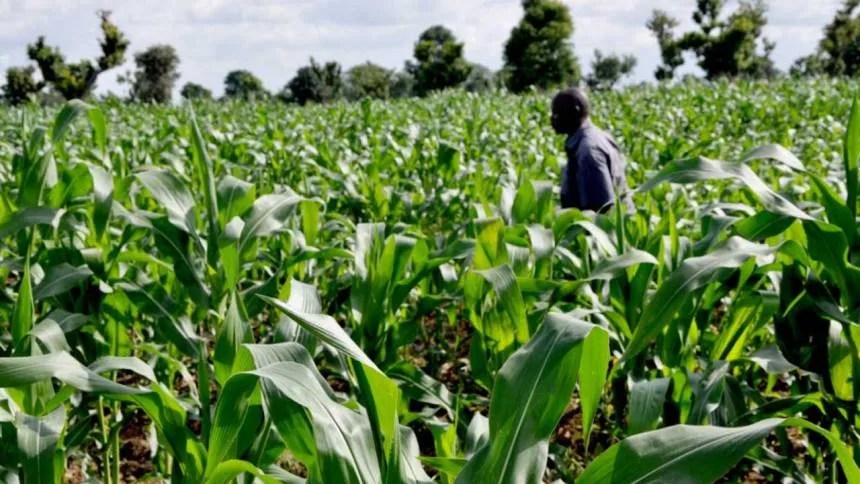
Agric lesson note for JSS2 First Term is now available for free. The State and Federal Ministry of Education has recommended unified lesson notes for all secondary schools in Nigeria, in other words, all private secondary schools in Nigeria must operate with the same lesson notes based on the scheme of work for Agric.
Agric lesson note for JSS2 First Term has been provided in detail here on schoolgist.ng

For prospective school owners, teachers, and assistant teachers, Agric lesson note is defined as a guideline that defines the contents and structure of Agric as a subject offered at SS level. The lesson note for Agric for SS stage maps out in clear terms, how the topics and subtopics for a particular subject, group works and practical, discussions and assessment strategies, tests, and homework ought to be structured in order to fit in perfectly, the approved academic activities for the session.
To further emphasize the importance of this document, the curriculum for Agric spells out the complete guide on all academic subjects in theory and practical. It is used to ensure that the learning purposes, aims, and objectives of the subject meant for that class are successfully achieved.
Agric Lesson note for JSS2 carries the same aims and objectives but might be portrayed differently based on how it is written or based on how you structure your lesson note. Check how to write lesson notes as this would help make yours unique.
The JSS2 Agric lesson note provided here is in line with the current scheme of work hence, would go a long way in not just helping the teachers in carefully breaking down the subject, topics, and subtopics but also, devising more practical ways of achieving the aim and objective of the subject.
The sudden increase in the search for JSS2 Agric lesson note for First Term is expected because every term, tutors are in need of a robust lesson note that carries all topics in the curriculum as this would go a long way in preparing students for the West African Secondary Examination.
This post is quite a lengthy one as it provides in full detail, the Agric-approved lesson note for all topics and sub-topics in Agric as a subject offered in JSS2.
Please note that Agric lesson note for JSS2 provided here for First Term is approved by the Ministry of Education based on the scheme of work.
I made it free for tutors, parents, guardians, and students who want to read ahead of what is being taught in class.
JSS2 Agric Lesson Note (First Term) 2024
Agricultural science 1st term
Scheme of work
JSS TWO
| 1 | Revision |
| 2 | Farm structure |
| 3 | Farm structure (ii) |
| 4 | Cultural practices |
| 5 | Cultural practices (2) |
| 6 | Cultural practices (contd) |
| 7 | Farming system |
| 8 | Farming system (contd) |
| 9 | Field work |
| 10 and 11 | Revision |
| 12 | Examination |
WEEK 2 AND 3
FARM STRUCTURES AND BUILDINGS
Farm Structures: They are simple erections on the farm site which make farm operations easier and more efficient. Farm structures are common agricultural structures associated with an agricultural use such as growing and harvesting crops, and raising livestock.These structures may include:
- Barns
- Cold storages for crops grown and raised on site
- Riding arenas (riding academies)
- Slaughterhouses
- Hay or feed storage
- Livestock shelter or shade structures
- Feed or hay shelter structures
- Loafing sheds
- Poultry coop
- Farm equipment storage
Types of Farm Structures
Farm structures are classified according to their functions and uses.
1.Production Structures – These are structures which facilitate production processes in the farm. Example are poultry battery cages, fish pond, shelter, rabbit hutches.
2.Structures for Shelter – They are simple farm buildings erected at different points in the farm to provide shelter for rest during heavy rain or when the intensity of the sun is too high. The sturctures are occasionally used as temporary storage.
3.Processing Structures – These are structures designed and constructed to speed up the processing of farm produce. Examples are smoking houses, shelling and hulling barns erected to accommodate processing machines such as grinding machines, feed mills and rice mills
4.Storage Structures – These are structures used for storing producebefore they are ready for sale or used as inputs in the next planting season e.g. silos, cribs, barns, rhumbus.
5.Utility Structures – These structures include well, canals, irrigations, pumping houses.6.Maintenance Structures – This include workshops for maintenance of farm tools and machineries
Farm Buildings :
These are bigger and more elaborate erections which are designed and constructed to serve different purposes.
Types of Farm Building and their Uses
1.Living Houses for the Farmer and Workers – These are houses which provide accommodation for the farmer and his workers. no serious farmer is expected to live outside the farm.
2.Production Houses – Buildings used for production. Examples – poultry house, hatcheries, pens.
3.Storage Houses – These are buildings used for storing farm tools, feeds, chemicals and fertilizers
4.Special Shelters – These building include milking parlour, sick bay, isolation sheds or quarantine houses, abattoir or slaughter houses
Maintenance of Farm Structures
Farmers need to regularly check on the condition of their buildings to maintain building stability and safety.
*.Repairs should be carried out regularly once wear and tear is noticed
*.Paints should be used for wooden and metal parts of farm structures that are constantly exposed to rain
*.Preservatives should be applied to wood to protect it against insects such as termites
WEEK 4
CULTURAL PRACTICES
Cultural practices involves all the activities carried out on the
farm before, during and after planting of crops. They are grouped
into: pre-planting, planting and post-planting operation.
- PRE-PLANTING OPERATION:
These are the operations done before
planting. They are:
- Choice of site
- Clearing of land
- Stumping
- Ploughing
- Harrowing
- Ridging
WEEK 5
PLANTING OPERATION: These are activities done during planting. They are:
- Planting /Sowing
- Transplanting
- Nursary practices
- Thinning
- Spacing
- Depth
WEEK 6
POST-PLANTING OPERATION: These are the activities that are done
after planting. They are:
- Thining
- Supplying
- Mulching
- Manure or application
- Watering
- Weeding
- Pest and disease control
- Harvesting
- Processing
- Storage
WEEK 7 and 8
FARMING SYSTEM
MIXED FARMING: is an agricultural system in which a farmer conducts different agricultural practice together, such as cash crops and livestock. The aim is to increase income through different sources and to complement land and labour demands across the year.
MONOCROPPING: is the agricultural practice of growing a
single crop year after year on the same land, in the
absence of rotation through other crops or growing
multiple crops on the same land (polyculture). Corn ,
soybeans , and wheat are three common crops often
grown using monocropping techniques.
SOLE CROPPING
Growing one crop alone or in pure stand, either as a
single crop or as a sequence of single crops within the
year.
MIXED CROPPING
Mixed cropping is a system of sowing two or three crops
together on the same land, one being the main crop and the
others the subsidiaries.
WEEK 9
FIELD WORK ………………
Hope you got what you visited this page for? The above is the lesson note for Agric for JSS2 class. However, you can download the free PDF file for record purposes.
If you have any questions as regards Agric lesson note For JSS2 class, kindly send them to us via the comment section below and we shall respond accordingly as usual.




